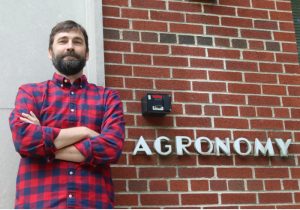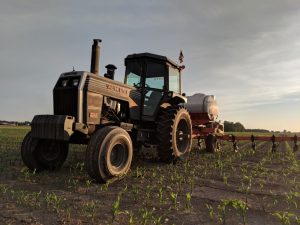Managing Soil fertility in the midst of record high fertilizer prices
By Dusty Sonnenberg, CCA, Ohio Field Leader, a project of the Ohio Soybean Council and soybean check-off.
Record high fall fertilizer prices have everyone’s attention in production agriculture. Fertilizer is one of the key inputs in crop production, and looking ahead to the 2022 crop year, it may be the most expensive input depending on how it is managed. Dr. Steven Culman, Associate Professor and State Soil Fertility Specialist at The Ohio State University says that there are some options farmers have looking ahead to 2022 to manage this expense.

“We’ve been telling farmers that soils are highly buffered, and they change very slowly, unless they are very sandy,” said Culman. “You can’t correct deficiencies in nutrients overnight. We have long term data that shows that when soils are in the maintenance range, that they are capable of providing crop nutrient needs for several years.”
The three primary soil fertility ranges identified include: Build-up, Maintenance, and Draw-down. “We have found that if the farmers have been following the recommendations, and their soils have good values, which would be 20 parts per million (ppm), for Phosphorus (P), and 120-130 ppm for Potassium (K), then taking a year or two off from applying additional fertilizer should not hurt them,” said Culman. “We have worked with several soil testing labs to collect soil test results in aggregate, without any identifying names, and when those were evaluated, most of the fields were in the range of 20-50 ppm for P.”
As Ohio soils were examined at the county level, soil test P data was obtained from all 88 counties in a period from 1993 to 2015 from the three major soil test labs the service Ohio farmers. Of those, 44-63% of Ohio’s counties had decreasing long term soil test P trends, and 84% of the counties had a negative P balance in 2014 (which means that the P outputs were larger than the P inputs).
The greatest increase in fertilizer cost has occurred in Nitrogen (N). “If we consider what most of the N will be used for, it is Corn production,” said Culman. “The economic model we use says that as the cost of N increases, our ability to see a return for each additional pound of N applied starts to decrease. As N fertilizer prices increase, or recommendations get paired back.”
One difference between N, and P&K is that N is managed on an annual basis. “We know that if we put N down one year, we cannot expect that same amount of N to be available for the following growing season,” said Culman. “A simple way to evaluate the N rate decisions is if N costs twice as much, but the price of corn is not twice as much, should you still be applying the same amount or more N? Those factors are two really important parts of how profitable a corn production system will be, the price of N and price of the corn.”
Culman recommends paying attention to both the grain prices and fertilizer prices. “We have a pretty good idea of what the crop production fertility needs are, but at the end of the day, it is still about making money,” said Culman. “That may mean when fertilizer prices are low, to apply a little more of what is needed, and when the fertilizer prices are high, to apply less.”